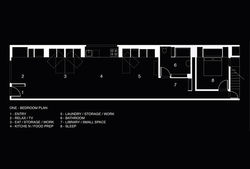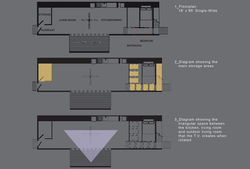top of page
 |  |  |
|---|---|---|
 |  |  |
 |  |  |
 |  |  |
 |  |  |
TRAILERITE FREEDOM
Thesis Year II // 2011
When I resumed work on my thesis project, I took different qualities from both the Pulte and Eliot Earl's Projects. I really began to concentrate on the space of the building and the interiors and I started to engage the architecture from the inside. I've always thought that the ideal home needs to have a certain amount of flexibility and adaptability. By the act of physically manipulating separators and surfaces, people can re-order their home to their liking. The transformation enables a change of activity. All homes require flexibility to allow for adaptation by the occupants over time because people and their circumstances change over time. I may be making speculative assumptions, but I think that the flexibility in the design of collective housing is essential if the designers wish to provide for the dichotomy of lifestyles for the occupant. By allowing different variations within the same architectural form, it makes possible the potential for future change. In this final design of the trailer, I've created a structural system that can be interchanged with different 'pods'.
 |  |  |
|---|---|---|
 |  |  |
 |
Thesis Year I
Studio_2010
A mobile home is currently an erasure of culture, yet it is still a culture within itself. The aspects of house and community design that contribute to local culture and social relations are very important. A mobile homes should not take away from a culture, rather add to it. Cookie-cutter styler homes and mass-produced mobile homes have all eroded a sense of place. There have been some recent architectural practices that have diluted the uniqueness and character of places. It should be ensured that when designing new mobile homes that they look and feel as though they belong in that distinct area. I wanted to create mass-produced trailers that are site-specific or at least region-specific. I really began to dissect the single-wide, analyze the problems, and look for solutions that I could bring to the table. I studied the way that they were spacially organized, how I could manipulate that space, and what the effects would be. At the end of my 1st year, I had created many different iterations of a single-wide with all of the same components including the introduction of the 4' thick "spine" wall.
bottom of page